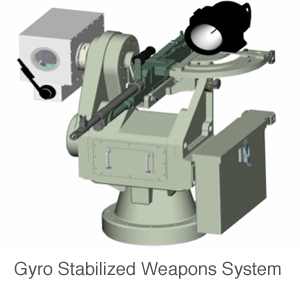The Harsh Reality of US Coast Guard Migrant Policy
by John Konrad (gCaptain) When merchant and cruise ships rescue migrants at sea, they offer more than just a lifeline from the perilous waters; they provide critical sustenance and care....




The Office of Specialized Capabilities (CG-721) is located in Coast Guard headquarters and reports directly to the Assistant Commandant for Capability, Rear Admiral Vincent Atkins, but works with all CG departments to develop weapons, ammunition, and dive capabilities for use worldwide. The team has a number of projects under development, but the latest project is the LA-51, officially known as Less Lethal Warning Munitions, used for non-compliant vessel interdiction. In simple terms, the LA-51 is meant to get your attention.
Being the Coast Guard, the military structure of the organization is always balanced with a goal to save and protect seafarers. The CG certainly has powerful weapons capable of protecting of the nation during times of war, but most of their operations are focused on saving lives, not taking them, A\and the LA-51 supports this objective.
Fired from a standard shotgun, the LA-51 is a two-part round, the first being standard to all shotgun munitions… a casing and charge to encase and propel the round to its target up to 200 meters away. The second part, the projectile, is non-standard. Comprised of pyrotechnics and a time delay, the projectile of an LA-51 round hesitates for a brief moment before exploding in a brilliant, and deafening thunder of smoke and noise. It is a non-lethal weapon used for getting the attention of non-responsive vessels.
The LA-51 is not a new type of ammunition; it is already used by the US Navy and special operations forces worldwide. Speaking from his office in Washington, Lt. Cmdr Kenneth Nagie CG-7211, briefly discussed how CG-721 works with other enforcement agencies, like Customs And Border Protection, and the military through the Joint Non-Lethal Weapons Directorate, spearheaded by the US Marine Corps in Quantico, Virginia. Lt. Cmdr Nagie says, “Various units in the Coast Guard have been working since the mid-90s exploring ways to fill a gap between lethal and non-lethal weapons, but these functions were merged into CG-721 at its formation in 2009.”
This is not the US Coast Guard’s first non-lethal weapon.
According to Nagie, the USCG is currently using various means to deal with suspects in the most humane way possible. Simplest in design are handcuffs for basic restraint, however units do carry more sophisticated non-lethal devices, although the particular details are under development.
“The LA-51 is a project we want people to know about” says Nagie. “The primary purpose of the LA-51 is to get a vessel’s attention and determine intent.” Certainly a different perspective from the military shock-and-awe tactical use for related Flash Bang devices.


Non-lethal weapon development is only one part of CG-721’s job, the office also works on weapon systems with more aggressive capabilities including the Gyro Stabilized Weapons System (GSWS).
Those who follow US Navy operations are familiar with the close-in weapon system referred by most as CIWS (pronounced Sea-Whizz). Developed as the last line of ship defense, the CIWS is an automated Gatling Gun capable of independently detecting and engaging hostile targets (such as missiles) and unloading an incredible firestorm of precisely targeted 20mm tungsten rounds, all without human intervention. Being the Coast Guard, the GSWS only matches the Navy’s device in broad similarity.
Rather than being fully automated, the GSWS is only assisted by computerized systems, its operation remains under the control of a qualified gunner, but these systems do automate many of the processes like target acquisition and ranging. The Coast Guard denied comment on specifics of the weapon, which is still in the early development stages, but you can expect thermal imaging and other modern systems to be incorporated in the device. Despite the GSWS’s design as a decidedly lethal weapon, the drive for it’s development is one of protecting, not taking, human life. “The system allows the gunner to operate the weapon remotely and from a protected position”.
While gCaptain still loves the science behind super weapons, like the Navy’s new Free Electron Laser, we are pleased that the Coast Guard is taking a different route in Research And Development. While many of CG-721’s other projects remain classified, we are sure they remain true to their mission of keeping our waterways and mariners safe.
Join the gCaptain Club for curated content, insider opinions, and vibrant community discussions.


Join the 105,917 members that receive our newsletter.
Have a news tip? Let us know.
Access exclusive insights, engage in vibrant discussions, and gain perspectives from our CEO.
Sign Up




Maritime and offshore news trusted by our 105,917 members delivered daily straight to your inbox.



Essential news coupled with the finest maritime content sourced from across the globe.
Sign Up